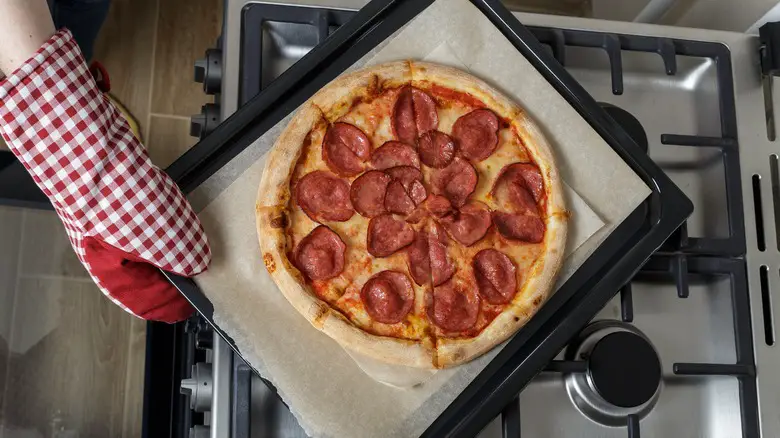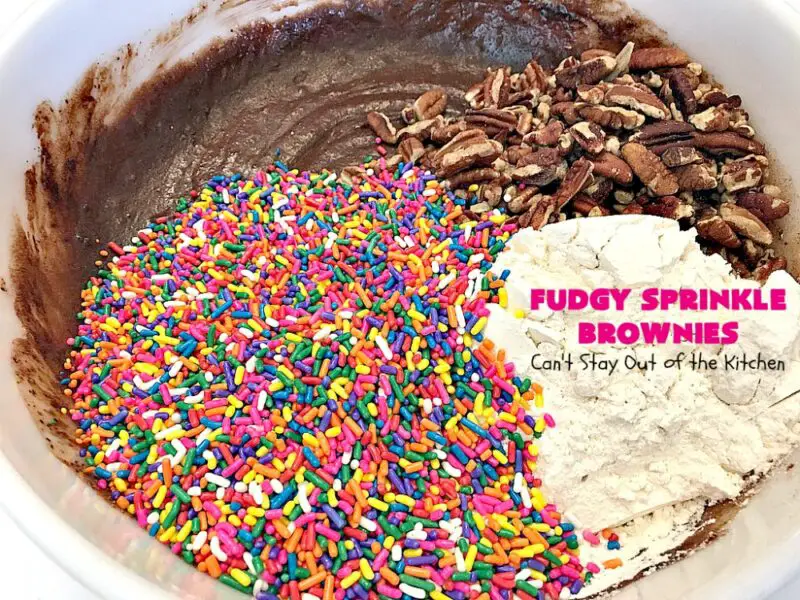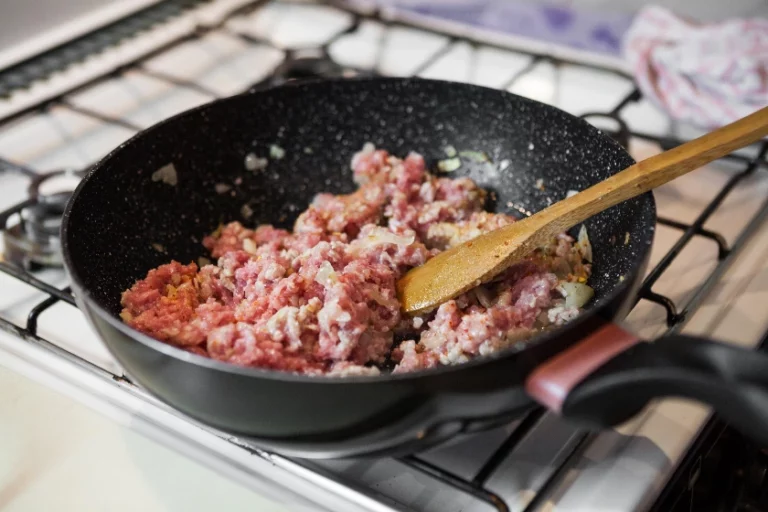
Cooking lasagna in a glass dish is a common question among home cooks. Choosing the right baking dish is crucial for achieving a delicious lasagna.
According to chef Michael Symon, a 9×13 glass dish is preferable as it keeps the ingredients condensed and prevents thin layers. Metal baking dishes, on the other hand, can react with the acidic ingredients in lasagna, resulting in a bitter taste. Additionally, the aluminum in metal pans can leech into the pasta, leaving it discolored.
Key Takeaways:
- A 9×13 glass dish is recommended for cooking lasagna.
- Metal baking dishes can react with acidic ingredients and alter the taste of lasagna.
- Glass dishes provide even heat distribution and retain heat well.
- Aluminum in metal pans can leech into the pasta, causing discoloration.
- Cooking lasagna in a glass dish is a reliable choice for achieving a delicious and evenly cooked lasagna.
The Best Pan for Lasagna
When it comes to choosing the best pan for lasagna, it’s important to consider the material of the pan. While there are various options available, a glass dish is generally recommended over a metal pan for several reasons.
First and foremost, glass dishes provide even heat distribution, ensuring that your lasagna cooks evenly. This is crucial for achieving a perfectly cooked dish with consistent flavors throughout. In contrast, metal pans, especially those made of aluminum, can react with the acidic ingredients in lasagna, altering the taste and potentially resulting in a bitter flavor.
Another advantage of using a glass dish is its ability to retain heat well. This means that your lasagna will stay hot for longer after it’s removed from the oven, allowing you to serve it at the perfect temperature. Metal pans, on the other hand, may not retain heat as effectively, resulting in a quicker cool-down period.
Furthermore, glass dishes are non-reactive, meaning there’s no risk of the ingredients interacting with the dish and affecting the taste of your lasagna. This is especially important when it comes to acidic ingredients such as tomatoes, which can react with certain metals and impart an unpleasant metallic flavor to the dish. With a glass dish, you can rest assured that your lasagna will have the pure, delicious flavors you desire.
| Material | Advantages | Disadvantages |
|---|---|---|
| Glass | Even heat distribution, excellent heat retention, non-reactive | Potential for breakage |
| Metal (aluminum) | Durable, lightweight | Potential for reactive interactions, uneven heat distribution |
| Ceramic (stoneware) | Even heat distribution, excellent heat retention | Potential for breakage, heavy |
| Enamel-coated cast iron | Durable, even heat distribution | Heavy, requires seasoning |
| Stainless steel | Durable, lightweight, even heat distribution | Potential for sticking, less heat retention |
While glass dishes are the preferred choice for baking lasagna, it’s worth mentioning that there are other alternatives available. Ceramic baking dishes, such as stoneware, also offer even heat distribution and excellent heat retention. However, they can be fragile and may crack if exposed to extreme temperature changes. Enamel-coated cast iron pans and stainless steel pans can also be used, providing durability and even heat distribution.
In conclusion, when it comes to cooking lasagna, the best pan to use is a glass dish. Its even heat distribution, excellent heat retention, and non-reactive properties make it the ideal choice for achieving a delicious and perfectly cooked lasagna. However, if you prefer to explore other options, ceramic, enamel-coated cast iron, and stainless steel pans can also yield satisfying results. The choice ultimately depends on your personal preference and the available options in your kitchen.
Benefits of Cooking Lasagna in a Glass Dish
When it comes to cooking lasagna, using a glass dish offers numerous benefits. Let’s take a closer look at why cooking lasagna in a glass dish is a popular choice.
Even Heat Distribution
Glass dishes are known for their ability to provide even heat distribution. This means that your lasagna will cook uniformly, resulting in a deliciously cooked dish. The glass material allows heat to radiate evenly throughout the entire dish, ensuring that all layers of lasagna receive the same amount of heat.
Excellent Heat Retention
Another advantage of cooking lasagna in a glass dish is its excellent heat retention. Glass retains heat for a longer period of time compared to other materials, which means that your lasagna will stay hot even after it’s removed from the oven. This is particularly useful if you’re serving the lasagna at a later time, as it will remain warm and enjoyable.
Non-Reactive Material
Glass is a non-reactive material, meaning it won’t interact with the ingredients used in your lasagna. This is especially important when it comes to acidic ingredients such as tomatoes, as they can react with certain metals and alter the taste of the dish. With a glass dish, you can have peace of mind knowing that the flavors of your lasagna will remain true to their original intention.
In conclusion, cooking lasagna in a glass dish offers several benefits. From even heat distribution to excellent heat retention and non-reactive properties, a glass dish is a reliable choice for achieving a delicious and evenly cooked lasagna. So go ahead and enjoy your homemade lasagna cooked to perfection in a glass dish!
Tips for Cooking Lasagna in a Glass Dish
If you’re planning to cook lasagna in a glass dish, we’ve got some tips to help you achieve a delicious and perfectly cooked dish. Follow these recommendations to make your lasagna a crowd-pleasing success!
Properly Grease the Dish
Before adding your lasagna ingredients, make sure to grease the glass dish properly to prevent sticking. You can use cooking spray or a thin layer of olive oil. This will ensure that your lasagna comes out easily and in one beautiful piece.
Let It Rest
After removing the lasagna from the oven, it’s important to let it rest for about 10-15 minutes. This allows the layers to set and makes it easier to cut and serve. Plus, the flavors have a chance to meld together and become even more delicious during this resting period.
Avoid Sudden Temperature Changes
One important thing to keep in mind when cooking lasagna in a glass dish is to avoid sudden temperature changes. Placing a hot glass dish directly under cold water or on a cold surface can cause the dish to crack. To prevent this, allow the dish to cool down slightly before immersing it in water or placing it on a different surface.
Table: Tips for Cooking Lasagna in a Glass Dish
| Tips | Description |
|---|---|
| Properly Grease the Dish | Grease the glass dish before adding lasagna ingredients to prevent sticking. |
| Let It Rest | Allow the lasagna to rest for 10-15 minutes after baking to let the flavors meld and make it easier to serve. |
| Avoid Sudden Temperature Changes | Avoid placing a hot glass dish in cold water or on a cold surface to prevent cracking. |
By following these tips, you can ensure that your lasagna turns out picture-perfect and absolutely delicious when cooked in a glass dish. Enjoy your homemade lasagna and impress your family and friends with your culinary skills!
Other Alternatives for Baking Lasagna
While a glass dish is the recommended choice for baking lasagna, there are other alternatives available. These alternatives can offer similar benefits and provide excellent results for your lasagna. Let’s explore some of these options:
Ceramic Baking Dishes
Ceramic baking dishes, such as stoneware, can be a great alternative to glass dishes. They offer even heat distribution, ensuring your lasagna cooks evenly. Ceramic dishes also retain heat well, keeping your lasagna hot for longer. However, it’s important to note that ceramic dishes can be fragile and may crack if exposed to extreme temperature changes, so handle them with care.
Enamel-Coated Cast Iron Pans
Enamel-coated cast iron pans are another alternative for baking lasagna. These pans are known for their durability and excellent heat distribution. They retain heat well, resulting in a perfectly cooked lasagna. However, they can be quite heavy, so make sure you have a sturdy oven mitt to handle them safely.
Stainless Steel Pans
Stainless steel pans are also a viable option for baking lasagna. They offer even heat distribution and can withstand high temperatures. Stainless steel pans are durable and long-lasting, making them a reliable choice for baking lasagna. Just be mindful of greasing the pan well to prevent sticking.
Ultimately, the choice of baking dish for your lasagna will depend on your personal preference and the options available to you. Whether you choose a glass dish, ceramic dish, enamel-coated cast iron pan, or stainless steel pan, each alternative has its own advantages. Consider factors such as heat distribution, heat retention, durability, and ease of use when making your decision. Happy baking!
| Baking Dish | Advantages |
|---|---|
| Glass Dish |
|
| Ceramic Baking Dishes |
|
| Enamel-Coated Cast Iron Pans |
|
| Stainless Steel Pans |
|
Conclusion
In conclusion, cooking lasagna in a glass dish is not only safe but also recommended. A glass dish offers several advantages for baking lasagna, including even heat distribution and excellent heat retention. These properties ensure that your lasagna cooks evenly and stays hot for longer after it’s removed from the oven. Additionally, glass dishes are non-reactive, which means there’s no risk of the ingredients interacting with the dish and affecting the taste of your lasagna.
While a glass dish is the preferred choice, there are alternative options available for baking lasagna. Ceramic baking dishes, such as stoneware, can also provide similar benefits in terms of heat distribution and retention. Enamel-coated cast iron pans and stainless steel pans are also viable alternatives. The choice of baking dish ultimately depends on personal preference and availability.
When cooking lasagna, it’s important to consider the type of dish you use to ensure the best results. Properly greasing the dish, allowing the lasagna to rest before serving, and avoiding sudden temperature changes are essential tips to keep in mind. By following these guidelines and using the right baking dish, you can create a delicious and perfectly cooked lasagna every time.
FAQ
Can you cook lasagna in a glass dish?
Yes, it is perfectly safe and recommended to cook lasagna in a glass dish.
Why is a glass dish preferred for lasagna?
Glass dishes provide even heat distribution, retain heat well, and are non-reactive to acidic ingredients, resulting in a delicious and evenly cooked lasagna.
What are the benefits of cooking lasagna in a glass dish?
Glass dishes offer even heat distribution, retain heat well, and do not react with the dish’s ingredients. They also keep the lasagna hot for longer after it’s removed from the oven.
Are there any tips for cooking lasagna in a glass dish?
It’s important to properly grease the dish to prevent sticking. Allowing the lasagna to rest for 10-15 minutes after removing it from the oven helps the layers set and makes it easier to cut and serve. Avoid sudden temperature changes to prevent the glass dish from cracking.
Are there alternative pans for baking lasagna?
Yes, ceramic baking dishes, such as stoneware, as well as enamel-coated cast iron pans and stainless steel pans can also be used for baking lasagna.


